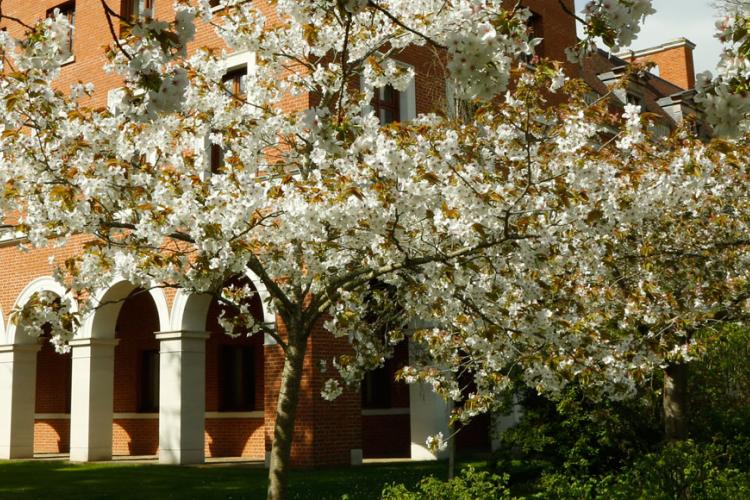CROPPED.jpg)
Zaria Forman’s magnificent artwork ‘Lincoln Sea’ will be on display at Selwyn from September. The artwork powerfully reveals the eroding ice sheets in Greenland. Mark Poynting (SE 2018), a polar researcher at the BBC, outlines the consequences of melting ice on global sea levels, water resources and people
In the coming years and decades, many glaciers will disappear — crumbling apart as seen in Zaria Forman’s artwork — irrespective of climate action. The Earth will continue to warm even after humans have stopped releasing greenhouse gases into the atmosphere, and glaciers will continue to shrink even after the Earth stops warming because of lags in the climate and glacier systems. We know that glaciers have retreated worldwide at a rate unprecedented in at least the last 2,000 years, and recent modelling suggests that around half of the world’s glaciers outside the ice sheets will disappear even if global temperature rises are kept to 1.5°C above pre-industrial levels. In real terms, Switzerland’s glaciers lost 6% of their volume in 2022 alone, having already halved in volume between 1931 and 2016. The Greenland and Antarctic ice sheets have lost mass in the past three decades, from a state of near balance in the early 1990s.
These losses have real-world consequences for communities worldwide. Glacier shrinkage affects the local water resources of around 1.9 billion people who receive water from mountainous regions. As glaciers shrink they store less freshwater. This places communities like the estimated 800 million people in High Mountain Asia, who at least partly depend on meltwater from glaciers for drinking and irrigation, at severe risk of long-term droughts. With some researchers noting possible links between water shortages and risks of social instability and mass migrations, this is a concern for all of us, regardless of geographical location.
On the other hand, some regions will have a water excess, which also has complicated consequences. The rising average sea levels in general as a result of glacial shrinkage will be superimposed by shorter-term fluctuations from storm surges or coastal high tides, which will affect millions of people close to shores. In fact, whilst we don’t expect it to happen this century, the last time carbon dioxide levels in the atmosphere were this high, sea levels were an estimated 5-25m higher than today.
Since starting as a climate and environment researcher at BBC News, I have seen how covering and engaging with climate and environmental issues is essential – audiences genuinely care deeply about these issues and want to know more. To which measure, there is reason to be cautiously optimistic. As the UN’s climate body, the Intergovernmental Panel on Climate Change said in its recent report, there remains a “window of opportunity”, but it is “rapidly closing”. Scientists stress that by undertaking rapid, deep and sustained cuts to greenhouse gas emissions, humans can still have a material effect on the fate of the world’s glaciers, as well as the Greenland and Antarctic ice sheets which have much longer response times. Slowing down the rate at which ice sheets such as those depicted in “Lincoln Sea” melt will be crucial to limit the impacts of sea-level rise and water shortages.


